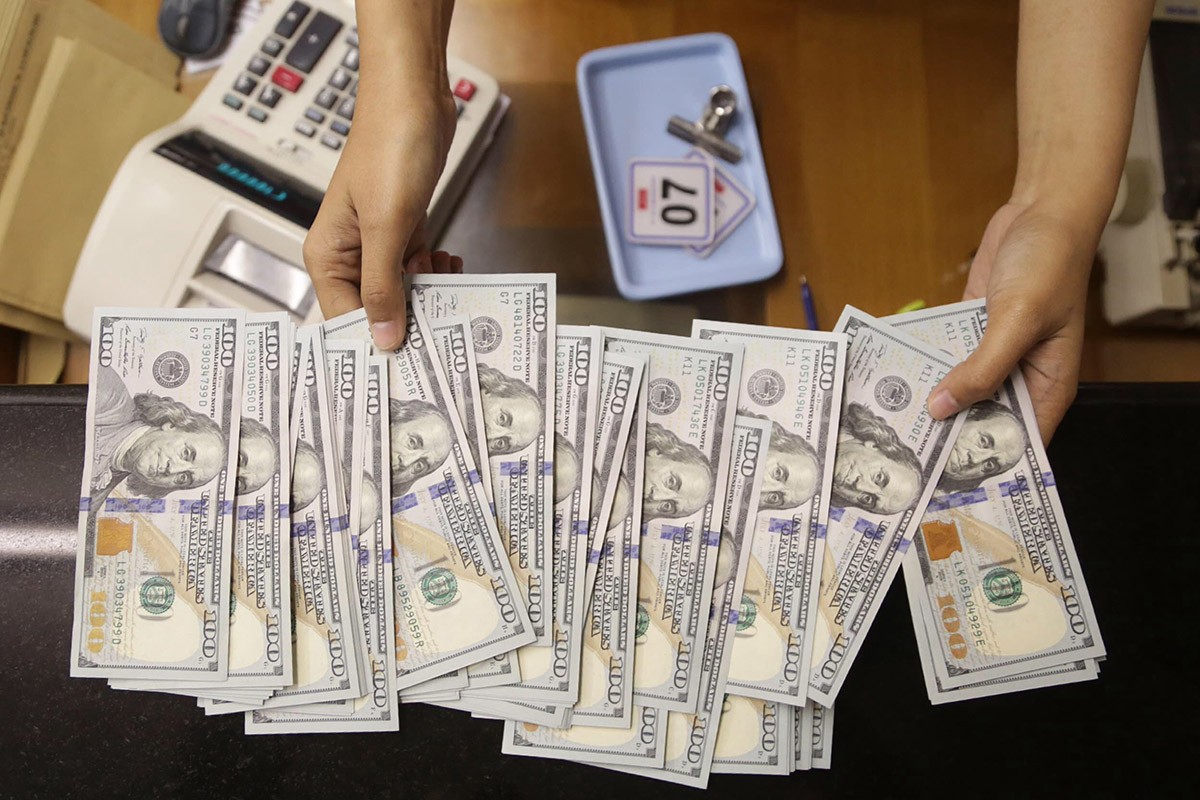Popular Reads
Top Results
Can't find what you're looking for?
View all search resultsPopular Reads
Top Results
Can't find what you're looking for?
View all search resultsEDITORIAL: Rupiah's first line of defense
The Rp 15,000 level is regarded as a psychological trigger for a crisis because it would represent a depreciation of almost 12 percent from the Rp 13,500 average exchange rate assumed for the current fiscal year.
Change text size
Gift Premium Articles
to Anyone
B
ank Indonesia (BI) has asserted, with justification, that the rupiah will not depreciate to Rp 15,000 to the United States dollar, regarded by many as a psychological crisis point, because the country’s key macroeconomic indicators are sound. The fiscal deficit and current account deficit are well under control at below 3 percent of gross domestic product (GDP), international reserves are equivalent to more than eight months of imports, and inflation will most likely remain below 4 percent for the whole year.
Indonesia’s external debt has also been maintained at 35 percent of GDP and 90 percent of companies are abiding by the central bank’s stipulation that requires them to hedge at least 25 percent of their net foreign exchange liabilities maturing within six months. This hedging is very important because latest official data show that 45 percent of corporate debts are in foreign currencies.
However, since the rupiah is not pegged to the US dollar but is floated against a basket of the currencies of Indonesia’s major trading partners, the movement of its exchange rate naturally also fluctuates along with external developments, notably the expected monetary tightening by the US Federal Reserve (Fed) and the general uncertainty about global trade.
We should see the depreciation of the rupiah from about Rp 13,400 in early February to almost Rp 13,800 earlier this week against the backdrop of those external factors. But the 1.5 percent weakening still raised concerns given the rapidity with which it occurred, while the market had been comfortable with an exchange rate volatility of only 3 percent throughout last year and 8 percent in 2016.
Barring a sudden steep rise in the oil price to more than US$75 per barrel, which would generate strong inflationary pressure or increase the fiscal deficit close to the 3 percent ceiling, it is extremely unlikely that the rupiah will crash beyond Rp 15,000. The Rp 15,000 level is regarded as a psychological trigger for a crisis because it would represent a depreciation of almost 12 percent from the Rp 13,500 average exchange rate assumed for the current fiscal year.
But the central bank should see to it that the exchange rate volatility be controlled below 10 percent for the whole year. In 2015 when the rupiah crashed at one time to over Rp 15,000 to the dollar, mainly because of external factors, the volatility rate exceeded 11 percent, making the rupiah the worst performing currency in Asia that year.
Needless to say, the central bank should closely monitor developments in the foreign exchange market, given the uncertainty in the global economy and the risk of sudden massive capital outflows caused by the upcoming Fed fund rate rise, and conduct measured market intervention only to restrain extreme volatility.
The monetary authority has issued many regulations on foreign exchange transactions that make it almost impossible now to buy more than US$100,000 a month without providing evidence of underlying transactions, thereby preventing massive speculative attacks. But the first line of defense of the exchange rate remains prudent fiscal and monetary management to keep the key macroeconomic indicators positive.










